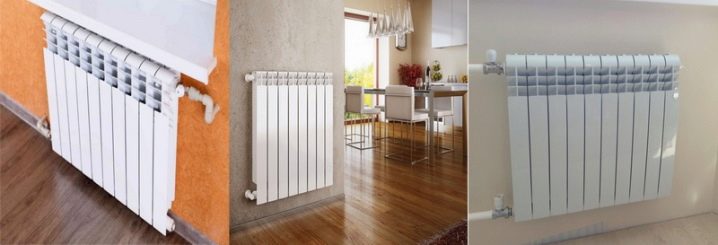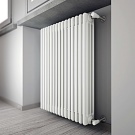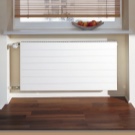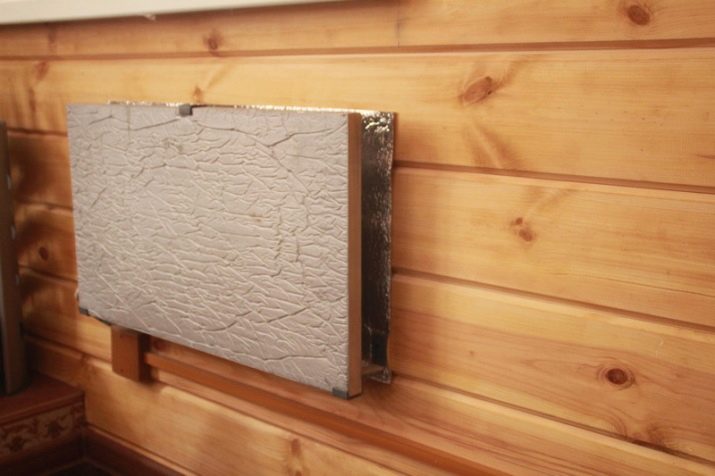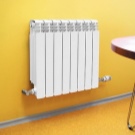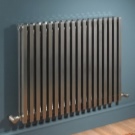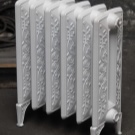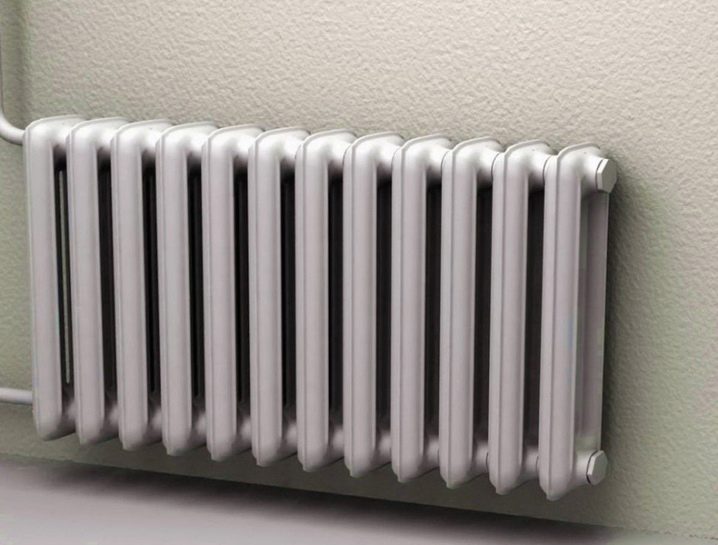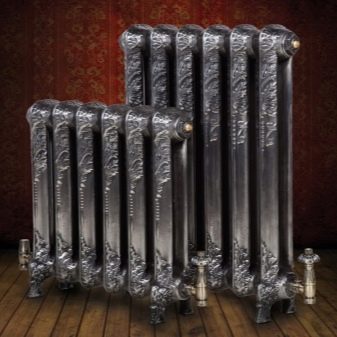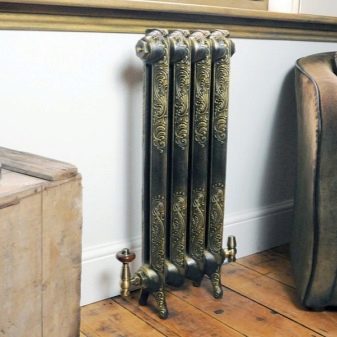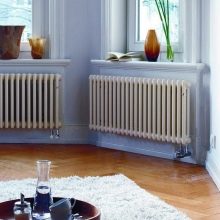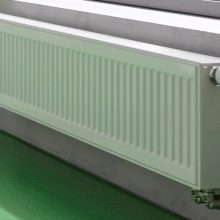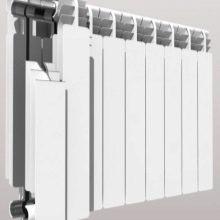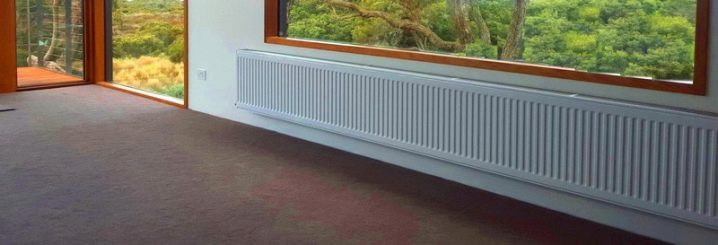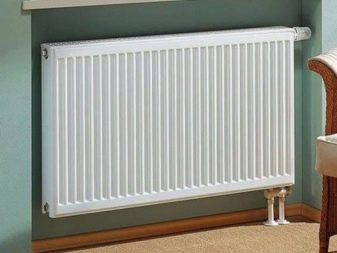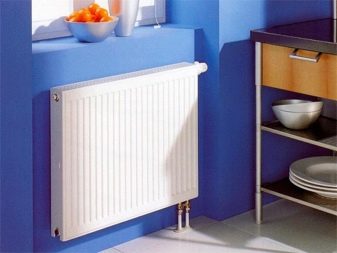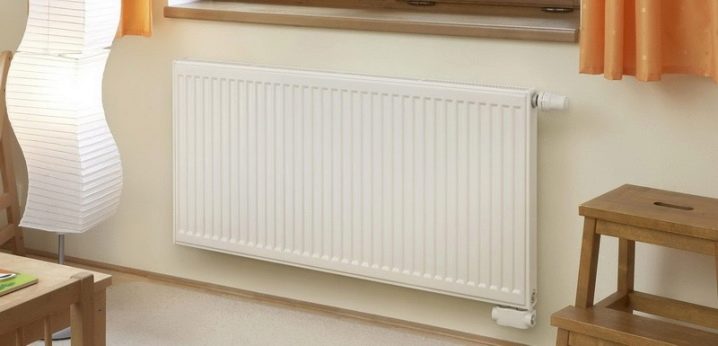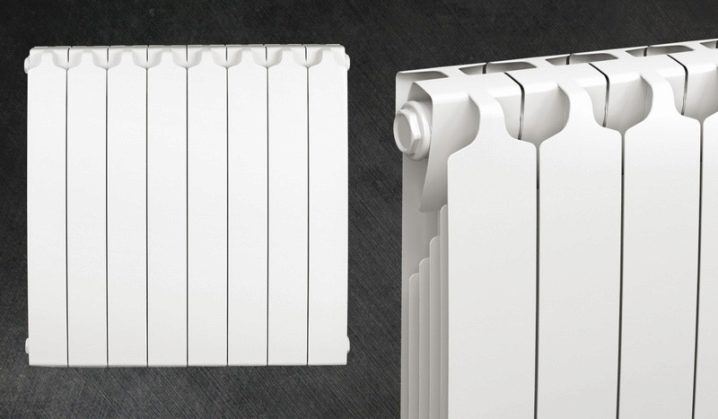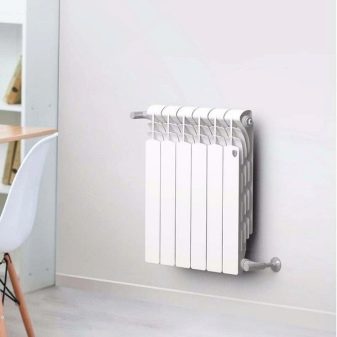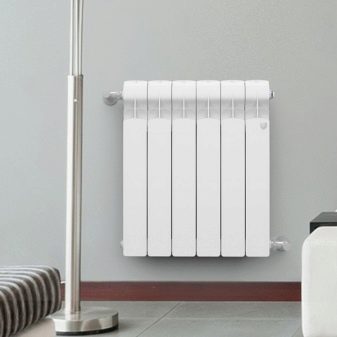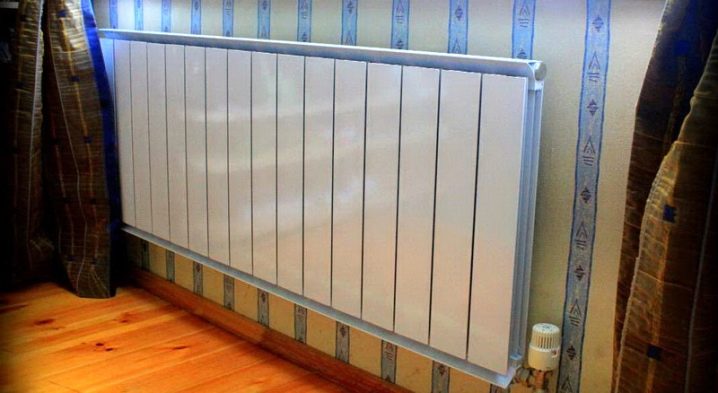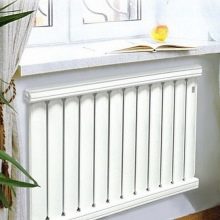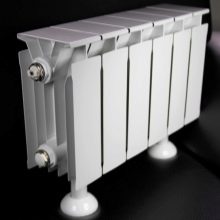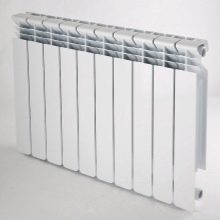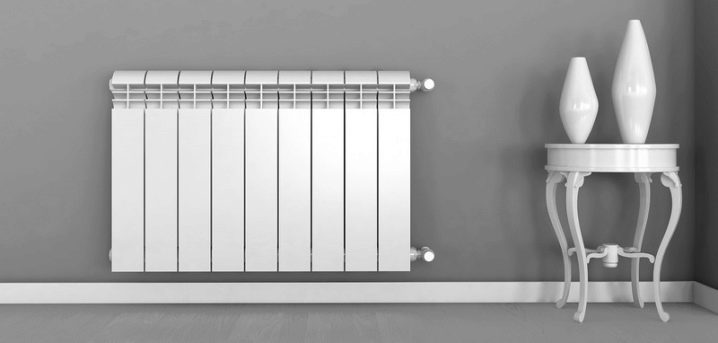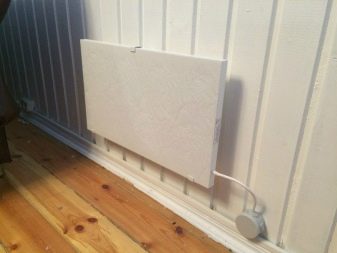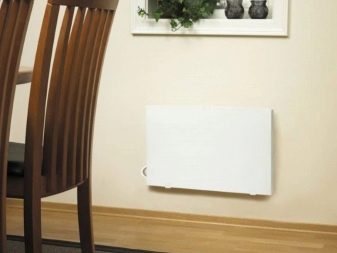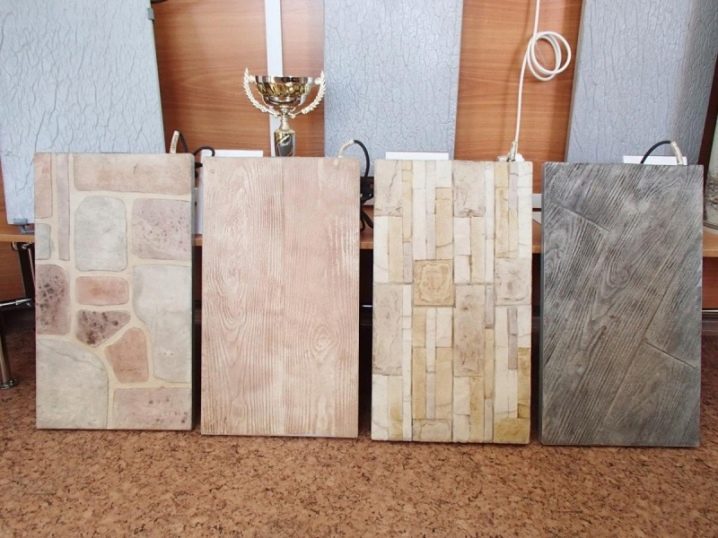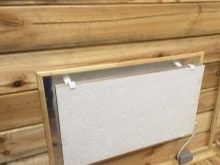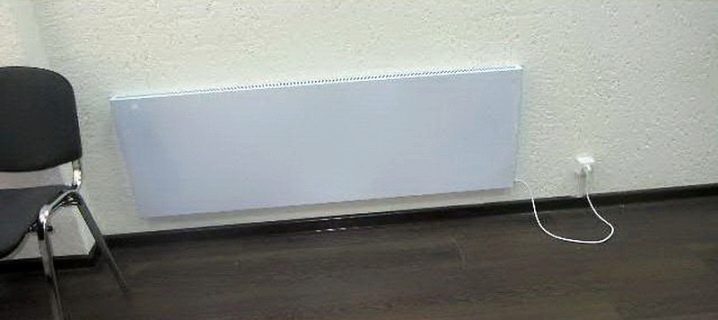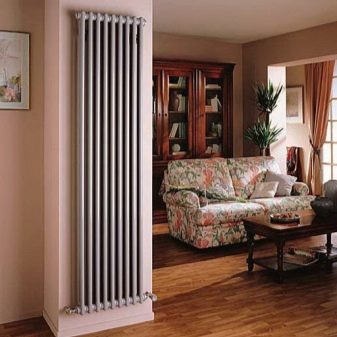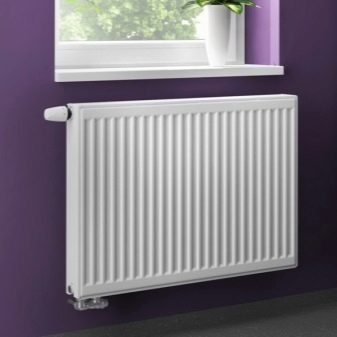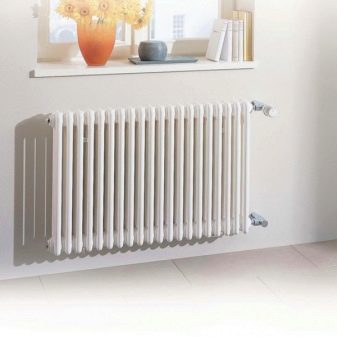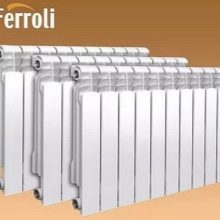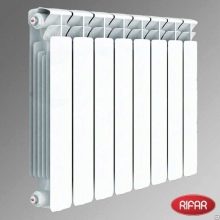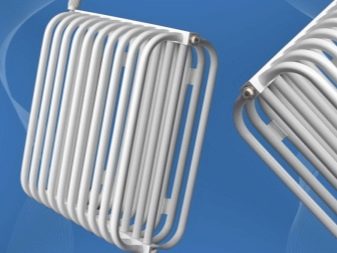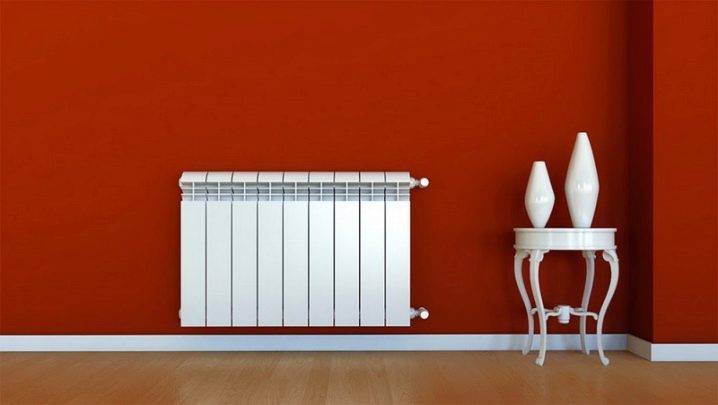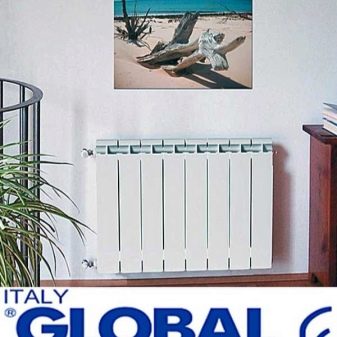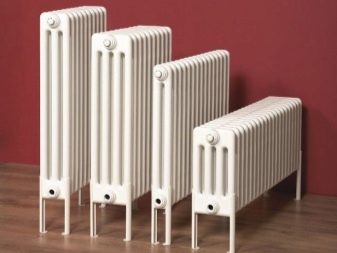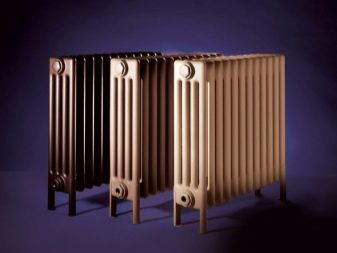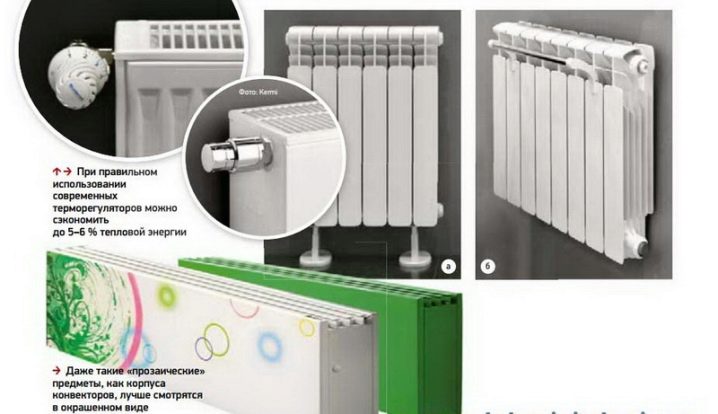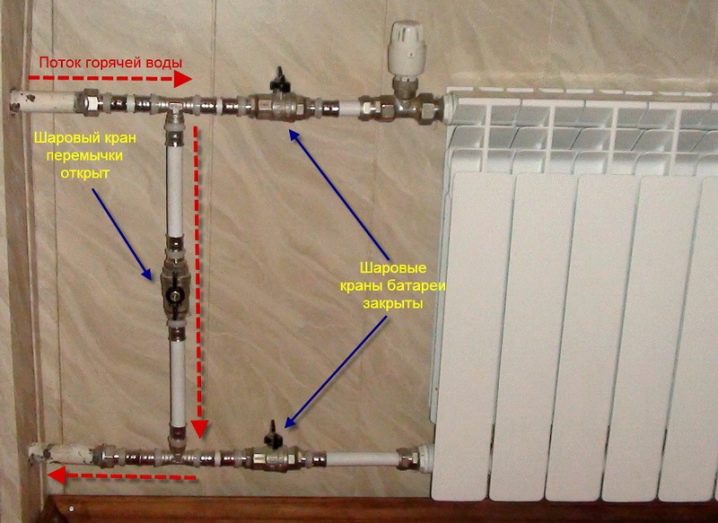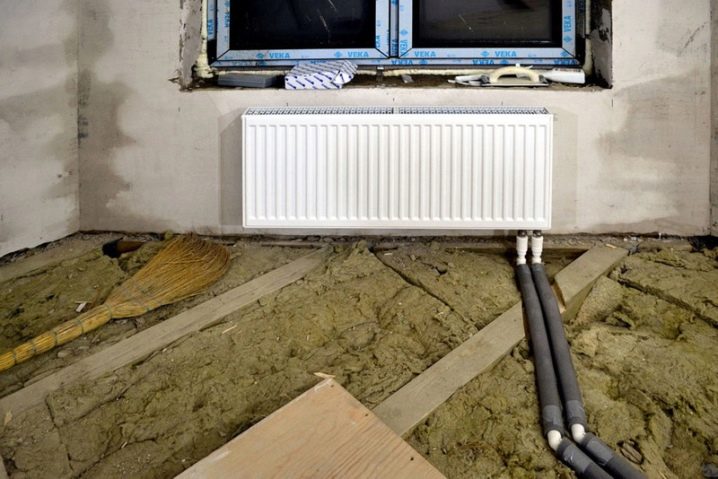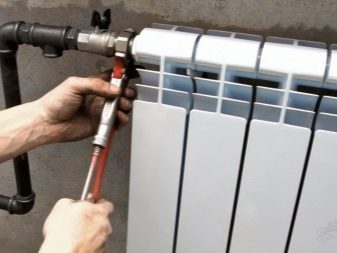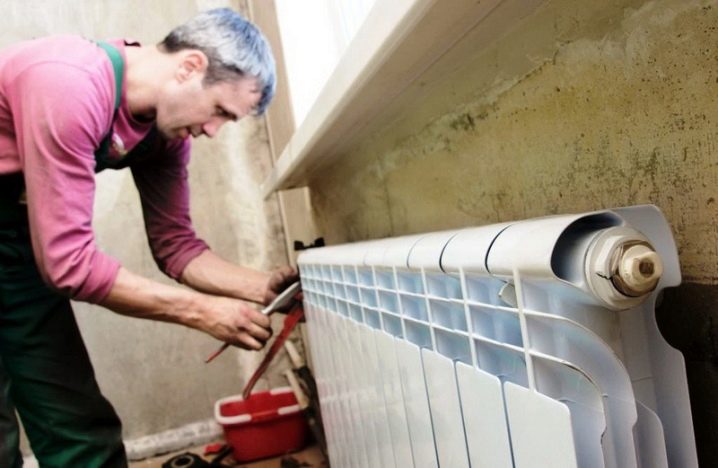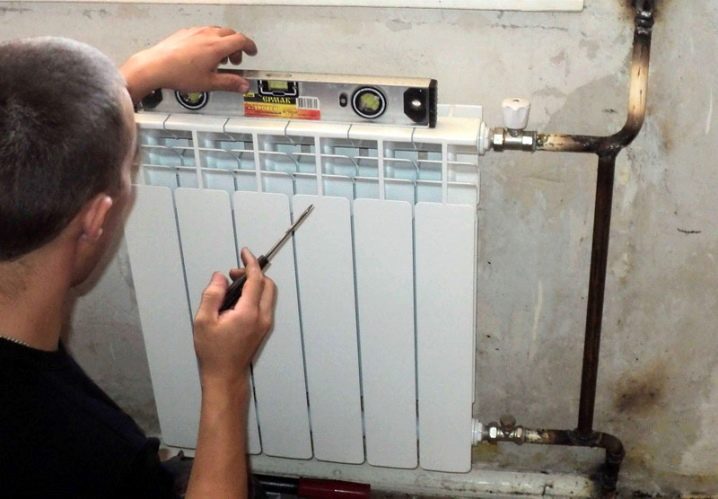Heating radiators: choose the appropriate option for a private house, installation technology

The radiator is a necessary link in the heating mechanism of a private dwelling or apartment. He is responsible for ensuring that the room was comfortable and warm. Therefore, when choosing it, it is necessary to take into account not only the cost and external performance, but also the technical characteristics of a particular product. After all, if the characteristics declared by the creator of the radiator are not the same in practice, the sooner wear of the device and its breakdown are simply inevitable.
Main characteristics
In a private house, in contrast to high-rise buildings, an autonomous heating mechanism is installed, that is, a system that does not depend on an ordinary boiler house in any way.For this reason, the temperature of the coolant, as well as the network pressure will be very different.
When you choose heating batteries that will be installed in a private home, you should take into account a number of factors:
- In buildings of this type, the pressure on the coolant, tanks and radiator pipes will be significantly less. In fact, radiator batteries will not experience such loads, because of which you can pick up any model, even with thin walls.
- In buildings of this type, the length of the pipes from the heat source to the radiator is small when compared with high-rise buildings. For this reason, the heat loss is almost zero, and the heat carrier will heat up more. That is, in a private house should be installed models that will withstand such temperatures.
- It takes quite a bit of liquid to fill such a heat system. If desired, you can add ethyl alcohol and antifreeze. So you can make protection for radiators and pipes, if the boiler will not turn on for a long time.
- Excluded even the slightest possibility of the so-called water hammer. However, in the private type of houses there may be a problem expressed in the freezing of water in the pipes.This will cause the batteries to simply burst if the person forgot to drain the water from there before leaving.
In the choice of heating radiators for a private house should be repelled from the main parameter - the area that you are going to heat. In the same cottages the space that requires warming up will be large, the energy costs will be the same. It is best to carry out the installation of such batteries, which will allow for high-quality heating with a minimum of thermal costs.
Kinds
It should be said that heating batteries come in various forms. And here it is not so much about their shape and size, but about the material from which they are made. After all, it is not a secret for anybody that different metals have different heat transfer characteristics, due to which the efficiency of batteries can vary considerably.
If we talk specifically about the types, then there are radiators:
- from cast iron;
- from aluminum;
- bimetallic;
- vacuum;
- of steel;
- quartz.
Now let's talk about each type in more detail.
Cast iron
The models under consideration have been installed in our homes for over a hundred years.They are still in great demand today because they provide high-quality space heating. They were also among the most popular in the USSR.
If we talk about their benefits, it should be called:
- long operational period;
- excellent thermal performance;
- high strength, as batteries can easily withstand high pressure inside and easily tolerate mechanical impact;
- work even with poor quality coolant;
- have corrosion resistance.
At the same time, the cast-iron models have a number of disadvantages:
- large dimensions, which significantly complicates transportation, maintenance and installation;
- low thermal conductivity due to the massiveness of the metal and the fact that its surface is porous;
- batteries need systematic and constant care - painting and maintenance;
- in the walls should be a good attachment for their installation;
- occupy a large area.
In addition, the cast-iron models are not very attractive appearance, which almost always makes them stand out from the interior not in the best way. Therefore, it is often necessary to put additional decorations on such radiators.
Steel
If we talk about this type of radiators, they are divided into three categories:
- panel;
- from sections;
- from the pipes.
Steel panel batteries are also called convectors, because the heat is supplied using the convection process. They usually have a rectangular shape, which is formed by two welded panels. The coolant moves between them through special channels. Such a radiator has a small weight, small size, which makes it possible to heat up in a short time and maintain a good temperature.
If we talk about the shortcomings, the main problem is poor resistance to mechanical damage and not very good pressure indicators. In addition, such models are highly susceptible to corrosion.
According to the characteristics, the steel batteries from the sections are somewhat similar to cast iron ones, although they have a number of serious differences:
- the pressure inside here is at 16 atmospheres;
- due to the presence of welded joints, radiators have increased strength;
- large operational period - up to 50 years.
This type of radiator is not very common, because their significant drawback is the high cost.Tubular steel batteries in their functionality are similar to sectional and panel radiators, but their price will be even higher. The main reason for this is that they have a rather pleasant appearance, which allows you to find a model for the interior. Yes, and on such batteries it is extremely convenient to dry things, which will be important for families where there are small children.
Aluminum
Aluminum belongs to the category of metals that conduct heat well. For this reason, such radiators can provide full heating of almost any room.
Their advantages are:
- excellent thermal performance;
- small sizes;
- good pressure of the working type, which varies in the range of 12-18 atmospheres;
- light weight
The coolant in the radiators of this type circulates very well, which allows for excellent heat transfer. Such circulation is possible here due to the presence of free intercollector type tubes. On the market, such models are presented quite widely.
The cost of aluminum batteries will depend on the manufacturer.But in general, it is quite affordable due to the low price of aluminum itself.In addition, such models have an attractive appearance, which makes it possible to consider them not only as a heating device, but also as part of the interior of the room. Thanks to its strict and neat geometric shapes, such a battery can easily fit into any interior.
But aluminum models have their drawbacks:
- they are extremely sensitive to the quality of the coolant, for which reason they require the installation of water filtration;
- very susceptible to serious pressure drops, therefore it is necessary to constantly monitor its level;
- resist corrosion formation quite poorly, even despite the presence of a protective coating on a polymer base;
- have a short lifetime - no more than 15 years.
In addition, a positive return of such batteries is not always an advantage. Good work of such a battery drives the warm air up, which accumulates at the ceiling, which can cause a sharp temperature drop. Therefore, before buying such batteries, it is necessary to calculate the amount of heat needed for the room.
Aluminum batteries fall into three categories,which will differ from each other in the device and capabilities:
- Sectional assembled. Their device makes it possible to replace plates that have broken.
- Integral. Have a strong design and differ in plasticity.
- Combined. They combine all the best from the two categories mentioned above. Considered one of the best solutions for owners of their own homes. If you fully comply with the operating conditions, such radiators will be able to last 10-15 years and will really effectively heat the house when it is cold outside.
Bimetallic
As a rule, the inside of such radiators is made of steel or copper, which ensures their good performance and enhances safety. And the outer side is usually equipped with aluminum fins. Today, bimetallic batteries are considered the best solution in this area. According to manufacturers, their batteries can serve for about 40 years. At the same time, they have a high cost, but still their characteristics have provided them with excellent positions in the market. It is advisable to buy such solutions if the price issue is not the main one.But they will definitely pay back the money invested and will work for quite a long time.
Vacuum
Recently, the vacuum type of batteries has begun to gain popularity. When compared with other types, they have a number of advantages. For example, they need a smaller amount of coolant, which will contact through the wall with a special solution based on lithium and boron, having a boiling point of +35 degrees. Also, such radiators have excellent safety features.
If you call other benefits, it should be noted:
- reduction of the coolant level for the functioning of the mechanism by 80 percent;
- reduction in the use of coolant from the centralized mechanism of thermal supply tripled;
- if induction boilers are used, up to 40 percent of electrical energy can be saved;
- it is quite easy to install such batteries even by yourself;
- in the radiators there is absolutely no corrosion, as well as air plugs;
- there is no need to use a powerful circulation pump unit due to low local resistance;
- high thermal performance.
Quartz
Heating devices made of quartz - a novelty in this segment. This type of battery can not be called high-tech, because it is an extremely simple option. Using batteries of this type, you can make an efficient, reliable and economical heating mechanism indoors that will keep you warm in the winter. Quartz radiator will fit into any home interior.
Its design is simple and is a monolithic slab inside which a heating element is built, made of an alloy of a chromium-nickel alloy. The plate is made of a special solution based on silica sand. The use of such sand is not accidental, because it can give out quite a long time the heat that it previously accumulated. Even if you turn off such a radiator from the heat network, it will still be warm for a long time, which will significantly reduce the consumption of electricity.
If we talk about the advantages of this type of battery, it should be called:
- Efficiency. A small consumption of electrical energy is the main advantage of heating devices from quartz, because other solutions consume significantly larger amounts of electrical energy and the rest of their advantages simply disappear.because the price of electricity is quite high.
- Substantial heat capacity. A plate of quartz has a rather serious thermal inertia. It heats up for a long time and slowly cools, as already mentioned above.
- Durability. In this case, the heating element is not in contact with the environment, which prevents it from oxidizing and significantly increases its service life.
- You can connect the thermostat, which allows you to get automatic control of the heating system.
- Quite low cost when compared with electric water heaters or other heating devices.
- Fireproof. The temperature of such a battery will not exceed 95 degrees, for which reason ignition of materials located near the heater is completely excluded. This allows installation of the device on almost any surface, including wood, plastic and drywall.
- Electrical safety. Such a battery does not create serious loads on the grid and can run smoothly almost throughout the season.
- Just installed. Quartz battery is attached to the wall with brackets.
- Do not require maintenance and do not require serious care.The only thing to do with such a battery is to wipe dust off it.
Popular manufacturers and reviews
In the segment of cast iron models, the most famous manufacturers are Chinese companies Tokio and Konner. A good domestic model of such batteries will be MS-140.
If we talk about steel panel solutions, then the products of the companies Korado, Buderus and Lidea are considered to be of the highest quality. But the tubular steel solutions are usually produced by foreign companies. Among them are the Zehnder, Arbonia and Delonghi products.
Aluminum batteries are produced by both foreign and domestic companies. Among them are well-known manufacturers such as Global, Ferroli and Rifar.
Bimetallic models are produced by both foreign and domestic firms. If we talk about domestic, then we should mention the brand "Teplopribor," and if it is foreign, then these are the products of the brands Polywarm, Sira, Royal Thermo Vittoria and the German company Kermi. When choosing ceramic batteries, you should pay attention to the products of the Teplaco brand.
Now let's talk about the experience of using different types of batteries by users and their feedback. This is logical, because manufacturers often state one thing, but in practice we get something completely different.If we talk about cast iron radiators, then users note that even beautiful solutions are not easy to install and they have a rather serious mass. In addition, they often need to install additional brackets.
We will say a little more about aluminum radiators by reading the reviews of users of batteries of various brands. If we talk about aluminum batteries from Sira, then users note that they are excellently warm and have an excellent appearance. Also, users say good heat transfer models. But many are not very happy with the considerable cost of solutions from this company. Also, users praise such batteries from the company Global and note that they are perfectly warm in combination with the boiler and have a great appearance. The same goes for Rifar solutions.
Bimetallic batteries, users also do not ignore and generally respond to them very flattering. For example, Rifar batteries look great in various interiors, are quite durable and can withstand a lot of pressure as well as high heat transfer temperature. In general, it is impossible to make up any clear rating of radiators, because they all have a number of their positive and negative sides.One thing can be clearly noted - in any case, you should individually determine which batteries in a particular private building will be the best solution.
Which is better to choose?
If there is a desire to choose an economical option for a suburban wooden private building, then it is best to carry out the installation of high-quality aluminum radiators. Such solutions have everything you need: modern design, ease, affordable price, and their negative sides are not so serious in terms of the autonomous heating mechanism of a private house.
If money is not so serious a question, then installation of bimetallic sectional batteries, especially if it is a copper-aluminum combination, would be an excellent solution. And if the children of small age are in the house, then in order to protect them and the rest of the household, you can opt for the convection type, completed with certain protection options. If you need to hide radiators, you can use outdoor convection solutions.
If the house has a stove with a water circuit, the simplest boiler for solid fuel or your house is equipped with gas heating, you can use time-tested cast iron batteries.Despite the fact that their choice entails difficulties with installation and weight, they at the same time allow to smooth out significantly fluctuations in temperature and store heat longer. And now you can easily find options with a nice design, if they are affordable for you.
Installation rules
Heating radiator type in your own home - a pledge of comfort and coziness in the autumn and winter. Well, when a similar mechanism has already been connected to a centralized type of heating mechanism. If there is no such thing, then it becomes necessary to use heating of an autonomous nature. If you are talking about how to install the heating system with your own hands correctly, then it should be said that the most important element will be the choice of options for connecting radiators in the house of your own building.
A number of people do not even suspect that this plays a very significant role in the heat transfer of the heater, the circulation of heat carrier inside it and the speed of hot water. The above in general will have a significant impact on the efficiency of the whole mechanism.
The first thing you need to figure out is pipe wiring. This can be called an important point, because the tenants of their own houses at the stage of their construction rarely can accurately and correctly calculate the costs that will be made to form the heating system, because you have to save money on various kinds of materials. Usually the method of connecting pipes can be either single or double pipe. The first option is economical, with a pipe running through all the walls and rooms from the heating boiler to the floor and returning to the boiler. On top of this, radiators should be installed, and the connection will be made using the connections below. At the same time, hot water flows into the pipes, completely filling the batteries. Then the water goes down and through another pipe enters the pipe. In fact, there is a serial connection of radiators due to the lower connection. But there is a minus, because at the end of a similar connection in all subsequent radiators, the temperature of the thermal medium will be lower.
Solve this point in two ways:
- connect a special circulation pump to the whole mechanism, which allows to distribute hot water evenly over all heating devices;
- connect additional batteries in the last rooms, which will increase the heat transfer area to the maximum.
If we talk about the two-pipe wiring, then for your own home a similar connection system will be more efficient. But at the same time, at the initial stage, the costs will be substantial due to the fact that it will be necessary to carry out the separation of two pipes. One must be set to supply hot water, and the second to connect for its removal.
When everything became clear with this question, one should focus on the connection diagram of the heating batteries. The most common will be lateral. To make it, you should remove the pipes on the side of the wall and connect them to the two battery tubes - top and bottom. The top is usually connected to the pipe that supplies the heat carrier, and from the bottom - the output. A diagonal type connection will also be effective. To accomplish it, you first need to attach a pipe that supplies heat carrier to the branch pipe at the top, and the return pipe to the lower pipe on the other side. It turns out that the thermal carrier will be transported diagonally inside the radiator.The effectiveness of this mechanism will depend on how the fluid is distributed in the radiator. Rarely, several battery sections may be cold. This happens only in cases where the ability to pass or the pressure is rather weak.
Note that the connection of the radiator from the bottom can be not only in one-pipe, but also two-pipe versions. But such a system is considered extremely inefficient. In this case, you still need to install a circulation pump, which will significantly increase the cost of creating a heating mechanism and will create the cost of electricity, which is necessary for the operation of the pump. If you say what you don’t need to do, it’s not to replace the return flow of water. As a rule, the presence of this problem is shown by debugging.
When mounting decorative screens overlaps the visibility of the thermostat, which is not necessary to do. Batteries will warm up for a long time. At the same time, it is impossible to mount the thermostat head in a vertical position, because this will lead to its unstable operation.
Installation of heating radiators with their own hands in their own home is associated with a number of issues.which do not give an indication that this is an easy process.Its complexity lies also in the fact that in each individual case it is necessary to select batteries for a particular building, and also to know exactly how the pipes pass in a private house that has already been built. Also no less important is the fact of understanding the need for heating and carrying out all the necessary calculations.
In addition, we should not forget that there are different connection schemes and what may be inefficient in one house, in the other, would be an excellent solution. If you decide to install the heating radiators yourself, then you should carefully study the theoretical aspects, and if possible at least consult with a specialist who will tell you that during the installation of radiators and the heating system as a whole, you should pay particular attention.
To learn how to properly install radiators with your own hands, see the following video.
